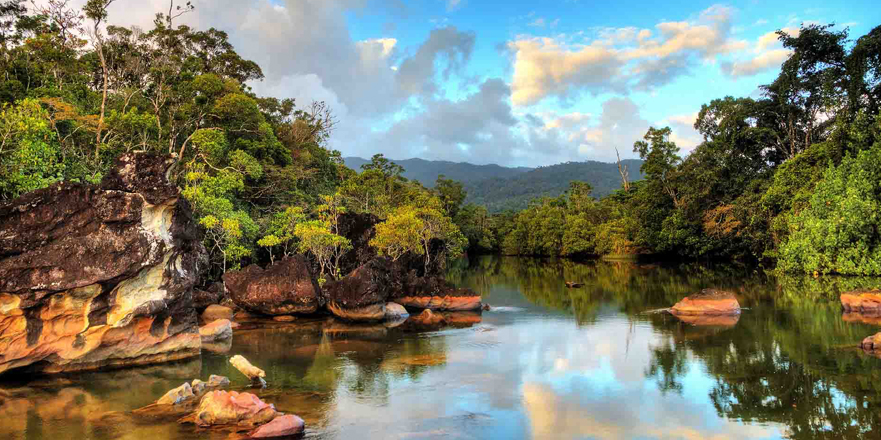Madagascar

Move it, Move it to Madagascar
Lying off the coast of southern Africa and 1,132 kilometres away from Mauritius, Madagascar is another precious gem in the archipelago of the Indian Ocean. Covering an area of 587,041 square kilometres, it is considered as the 4th largest island in the world after Borneo, New Guinea and Greenland. “The Great Red Island” as it is often called, due to its red soils, inhabits nearly 29 million people. Teeming life, Madagascar is also home to more than 50% of the world’s chameleon population, 15,000 plant species and unique fauna and flora, including the malagasy giant rat and biggest Baobab tree respectively. Contrary to the famous Madagascar animated film, penguins do not inhabit the renown destination but is truly home to the world’s oldest living primates, Lemurs. Endemic to the island, 32 different types of lemurs can be found solely on the ground of Madagascar.
Madagascar's culture is a synthesis of the diverse cultures of its many ethnic groups. The culture of the nation reflects the Malagasy people's ancestry and bears significant similarities to Southeast Asian and East African traditional customs in some areas.The ancestor worship and traditional festivals that are at the core of Madagascar's culture are rooted in a variety of tribal heritages and traditions. Although Islam and Christianity are the two most common religions, soothsayers and healers are still respected in most villages in order to predict the future and treat disease. All rituals and celebrations include traditional music and dance from Indonesia and Africa, which strengthens the connections to the archipelago's lengthy history. A unique and excellent cuisine has moreover been created by combining indigenous foods with Chinese, Indian, and French influences.
Malayo-Polynesian is the native language of Madagascar, followed by French as its second language. Yet, international visitors can also find staff in the tourism industry to interact in English with, despite the language barriers. Madagascar today offers a wide range of accommodations that are genuinely diverse, from luxurious beach hideaways and jungle lodges to distant camping in unexplored regions. Incredibly beautiful sceneries may be seen all around Madagascar. One of Madagascar's first national parks, Bemaraha Tsingy is a labyrinth of 72,300 hectares formed by magnificent limestone formations. Hence, from enchanting accommodation in nature to national parks, Madagascar additionally appeals to ecotourists.
Sustainable Travel Facts
Eco-attraction:
Visit the three UNESCO World Heritage sites of Madagascar, namely The Rainforests of the Atsinanana, The Royal Hill of Ambohimanga and the Tsingy de Bemaraha Strict Nature Reserve. Activities such as hiking, horse riding and mountain biking can also be done in Madagascar.
Support locals:
By purchasing handmade souvenir gifts and products from locals such as their famous raffia bags, contribute to a better standard of living for our dear Malagasy friends.
Travelling safely:
Despite frequent petty crimes, Madagascar is generally safe to visit. Yet it is advisable not to travel alone.
Peak season:
July, August and December are considered peak seasons. It is recommended to book in advance as lodges tend to be fully booked during these periods.
Quick Info
Madagascar Location
Madagascar is located in the southeast of Africa and west of Mauritius, at about 900 km.
Map of Madagascar
Known as the fourth largest island, Madagascar covers an area of about 587,041 square km with a population amounting to 26 million. Its capital is Antananarivo.
Weather in Madagascar
Check the latest weather forecast for Madagascar
Your Local Connection
Book with a local tour operator to benefit from local knowledge and support sustainable tourism
Madagascar Country Portal
Discover more about Madagascar from its landscape and cuisine to the activities available

